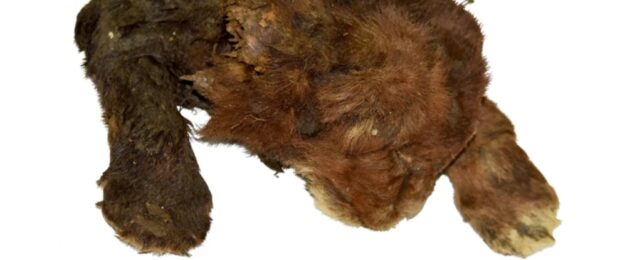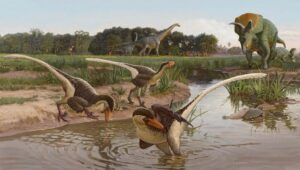Scientists have discovered a mummified saber-toothed kitten in the Siberian permafrost. The cold, dry conditions perfectly preserved the three-week-old cub.
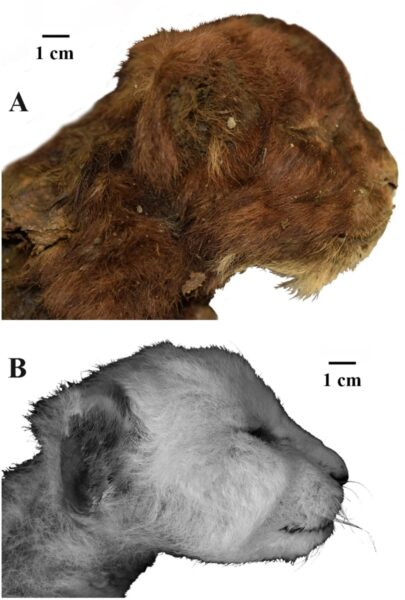
Photo: Lopatin et al., 2024
This 31,800-year-old mummy from the Late Pleistocene era is incredibly rare — a world first, even.
“For the first time in the history of paleontology, the appearance of an extinct mammal that has no analogs in the modern fauna has been studied,” wrote the authors of the new study.
The saber-toothed kitten’s limbs, torso, head, and fur are all intact. Portions of its pelvic bones, femur, and shin bones were found in the ice around the body. Excited researchers were able to see for the first time what this extinct animal actually looked like.
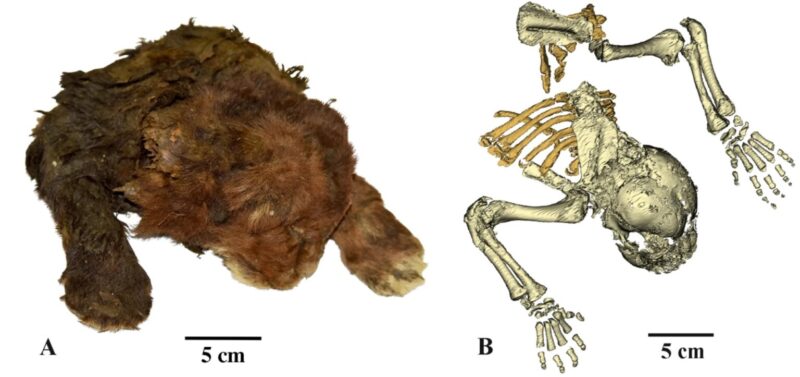
A. The frozen remains of the cub. B. A CT scan of its skeleton. Photo: Lopatin et al., 2024
The cub was too young to show the characteristic long upper canines of adult saber-toothed cats. But like the adults, it already had a large premaxillary bone in its upper jaw that would have allowed room for the iconic giant fangs to form.
Arctic adaptations
The cub shows significant differences from modern-day lion cubs of the same age. It has a larger mouth, smaller ears, a longer and thicker neck, and much longer forelimbs. The baby cat’s paws are also much larger than those of lion cubs and have no carpal pads on the wrist joints.
Many of these features show how well the species adapted to life in the harsh Arctic. Its thick fur and small ears would help prevent heat loss, while the larger paws and lack of carpal pads would have helped it walk, lynx-like, through deep snow.
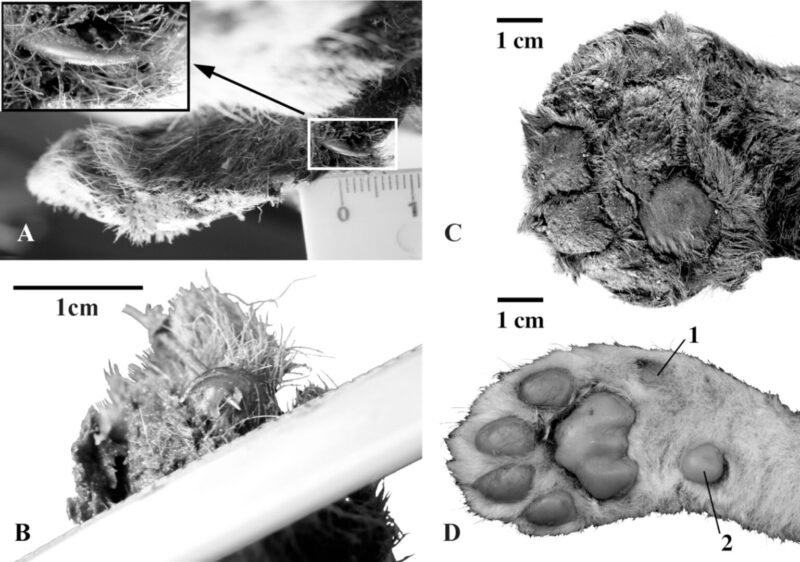
A, B, and C show images of the frozen cub’s paw. D shows a lion cub’s paw for comparison. Photo: Lopatin et al., 2024
Besides analyzing the animal’s appearance, the study also notes that the range of the saber-toothed cat reached much farther than experts believed.
The species lived in Eurasia until the end of the last Ice Age, approximately 10,000 years ago. This is the first evidence that its range stretched so far north.
